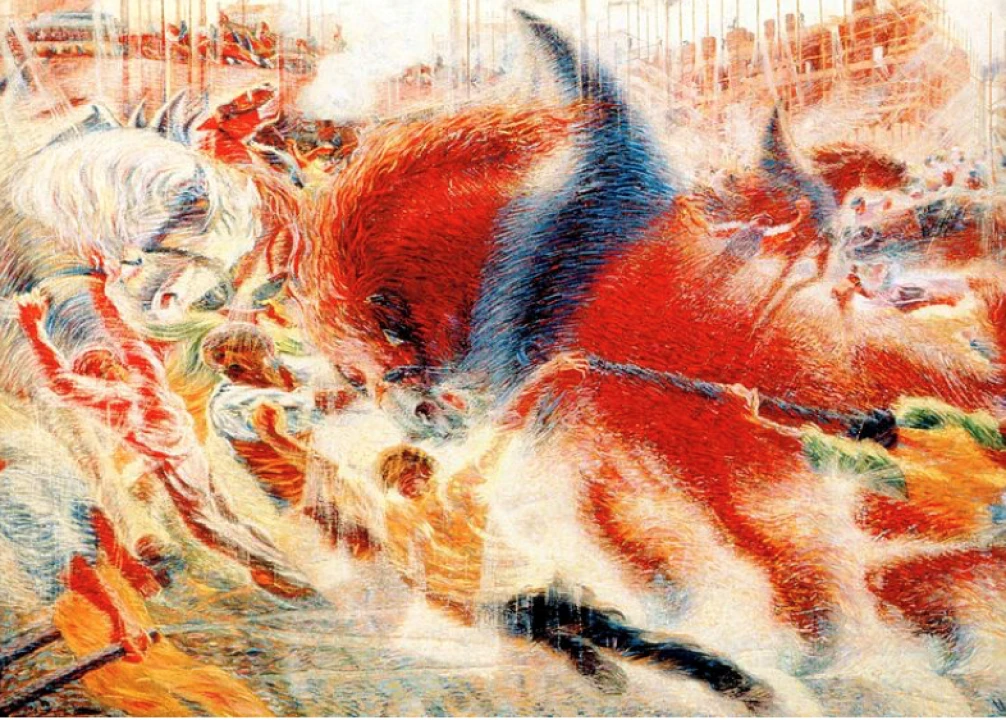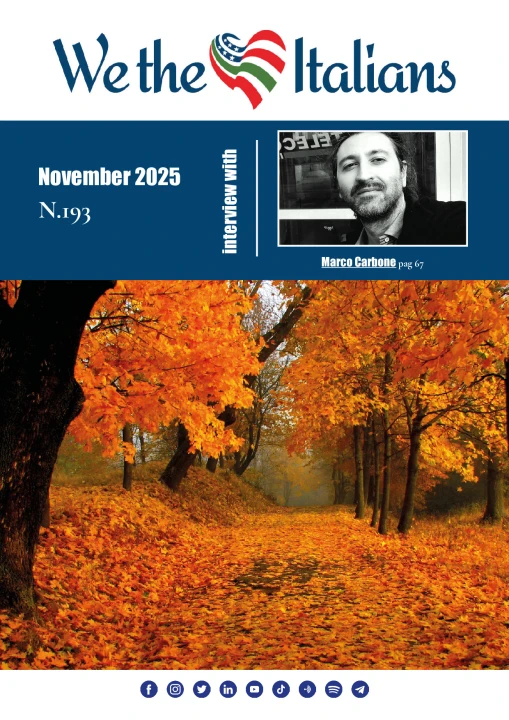Futurismo is an Italian avant-garde artistic movement that can be considered as influential as Cubism or Expressionism. It involves not only figurative art, but also literature, dance, design and cinema. The movement's founder, poet Filippo Tommaso Marinetti published his Manifesto in 1909.
Marinetti famously wrote: “We intend to exalt aggressive action, a feverish insomnia, the racer’s stride, the mortal leap, the punch and the slap.” Until its conclusion in 1944, the movement attracted many artists who aimed to capture the energy of the modern world.
Focusing on progress and modernity, Futurism strove to renew every aspect of culture and life, repudiating tradition. The movement looked instead to the future, by exalting machines, speed, dynamism and everything new. The technical innovations of the time - the electric light, the internal combustion engine and the airplane – provided inspiration. The movement was also intensely patriotic and embraced war. In fact, the first generation of futurists were interventionists and voluntarily enlisted in The Great War.
Futurists were experimental stylistically. In poetry, their slogan was: parole in libertà (words in freedom). Marinetti’s 1912 poem Zang Tumb Tumb is representative of their incendiary desire to destroy tradition, beginning with the title.
After WWI, the Futurist's focus shifted from automobiles to airplanes (Aeropittura - painting inspired by flight), which particularly fascinated the artists. In 1917, Anton Giulio Bragaglia directed the only surviving Italian Futurist film Thaïs, where he used visual techniques that later influenced Alfred Hitchcock’s film Vertigo.
When it comes to the relationship between Futurism and Fascism, it is difficult to determine. The movement identified with the fascist regime, despite Mussolini never having declared Futurism the official art of Fascism. Another inconsistency is that while futurists embraced all things modern and included female artists, certain male futurists possessed misogynistic tendencies.
Despite being a lesser known avant-garde style, Futurism served as an inspiration for Art Déco. Much like Futurism, Art Déco absorbed the passion for dynamism, speed, geometric images, the exaltation of modernity and city life.
Italy celebrates Futurism by placing the bronze sculpture Forme uniche nella continuità dello spazio of Umberto Boccioni on the 20 cent Euro coin.
In 2014, the Guggenheim Museum in New York City held an exhibition on Futurism, presenting the full breath of the Italian movement for the first time outside of Italy. Click here for a brief video on the museum's show.



